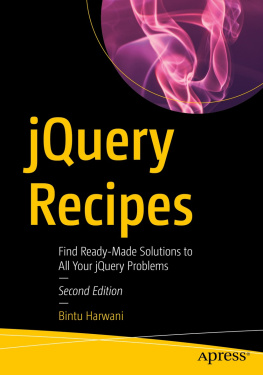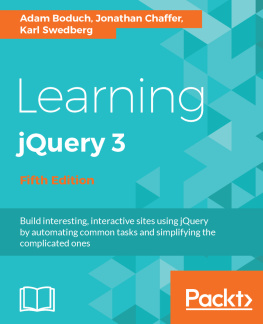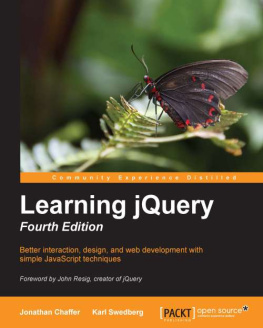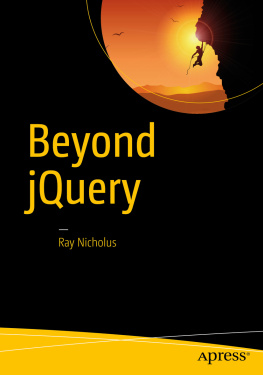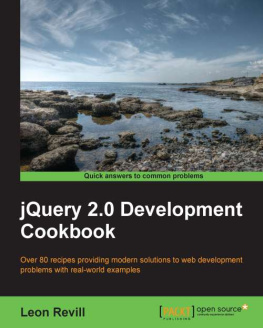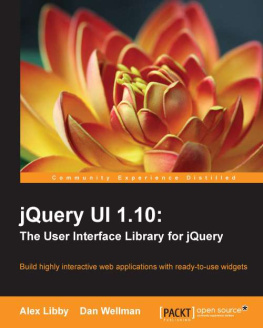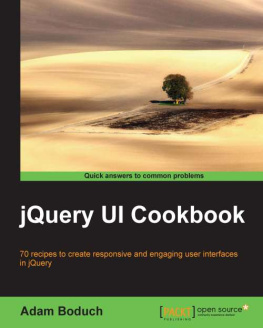Lindley Cody(Editor) - jQuery Cookbook: Solutions & Examples for jQuery Developers
Here you can read online Lindley Cody(Editor) - jQuery Cookbook: Solutions & Examples for jQuery Developers full text of the book (entire story) in english for free. Download pdf and epub, get meaning, cover and reviews about this ebook. year: 2009, publisher: OReilly Media, genre: Home and family. Description of the work, (preface) as well as reviews are available. Best literature library LitArk.com created for fans of good reading and offers a wide selection of genres:
Romance novel
Science fiction
Adventure
Detective
Science
History
Home and family
Prose
Art
Politics
Computer
Non-fiction
Religion
Business
Children
Humor
Choose a favorite category and find really read worthwhile books. Enjoy immersion in the world of imagination, feel the emotions of the characters or learn something new for yourself, make an fascinating discovery.

- Book:jQuery Cookbook: Solutions & Examples for jQuery Developers
- Author:
- Publisher:OReilly Media
- Genre:
- Year:2009
- Rating:5 / 5
- Favourites:Add to favourites
- Your mark:
jQuery Cookbook: Solutions & Examples for jQuery Developers: summary, description and annotation
We offer to read an annotation, description, summary or preface (depends on what the author of the book "jQuery Cookbook: Solutions & Examples for jQuery Developers" wrote himself). If you haven't found the necessary information about the book — write in the comments, we will try to find it.
Ideal for newcomers and JavaScript veterans alike,jQuery Cookbookstarts with the basics and then moves to practical use cases with tested solutions to common web development hurdles. You also get recipes on advanced topics, such as methods for applying jQuery to large projects.
Solve problems involving events, effects, dimensions, forms, themes, and user interface elements
Learn how to enhance your forms, and how to position and reposition elements on a page
Make the most of jQuerys event management system, including custom events and custom event data
Create UI elements-such as tabs, accordions, and modals-from scratch
Optimize your code to eliminate bottlenecks and ensure peak performance
Learn how to test your jQuery applications
The books contributors include:
Cody Lindley
James Padolsey
Ralph Whitbeck
Jonathan Sharp
Michael Geary and Scott Gonzlez
Rebecca Murphey
Remy Sharp
Ariel Flesler
Brian Cherne
Jrn Zaefferer
Mike Hostetler
Nathan Smith
Richard D. Worth
Maggie Wachs, Scott Jehl, Todd Parker, and Patty Toland
Rob Burns
Lindley Cody(Editor): author's other books
Who wrote jQuery Cookbook: Solutions & Examples for jQuery Developers? Find out the surname, the name of the author of the book and a list of all author's works by series.

